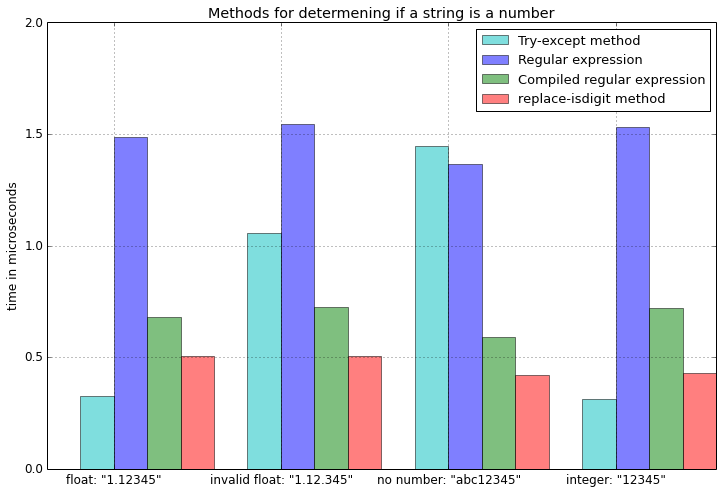There are already good answers in this post. I wanted to give a slightly different perspective.
Instead of searching for a digit, number or float we could do a negative search for an alphabet. i.e. we could ask the program to look if it is not alphabet.
## Check whether it is not alpha rather than checking if it is digit
print(not "-1.2345".isalpha())
print(not "-1.2345e-10".isalpha())
It will work well if you are sure that your string is a well formed number (Condition 1 and Condition 2 below). However it will fail if the string is not a well formed number by mistake. In such a case it will return a number match even if the string was not a valid number. To take care of this situation, there are many rule based methods must be there. However at this moment, regex comes to my mind. Below are three cases. Please note regex can be much better since I am not a regex expert. Below there are two lists: one for valid numbers and one for invalid numbers. Valid numbers must be picked up while the invalid numbers must not be.
== Condition 1: String is guranteed to be a valid number but 'inf' is not picked ==
Valid_Numbers = ["1","-1","+1","0.0",".1","1.2345","-1.2345","+1.2345","1.2345e10","1.2345e-10","-1.2345e10","-1.2345E10","-inf"]
Invalid_Numbers = ["1.1.1","++1","--1","-1-1","1.23e10e5","--inf"]
################################ Condition 1: Valid number excludes 'inf' ####################################
Case_1_Positive_Result = list(map(lambda x: not x.isalpha(),Valid_Numbers))
print("The below must all be True")
print(Case_1_Positive_Result)
## This check assumes a valid number. So it fails for the negative cases and wrongly detects string as number
Case_1_Negative_Result = list(map(lambda x: not x.isalpha(),Invalid_Numbers))
print("The below must all be False")
print(Case_1_Negative_Result)
The below must all be True
[True, True, True, True, True, True, True, True, True, True, True, True, True]
The below must all be False
[True, True, True, True, True, True]
== Condition 2: String is guranteed to be a valid number and 'inf' is picked ==
################################ Condition 2: Valid number includes 'inf' ###################################
Case_2_Positive_Result = list(map(lambda x: x=="inf" or not x.isalpha(),Valid_Numbers+["inf"]))
print("The below must all be True")
print(Case_2_Positive_Result)
## This check assumes a valid number. So it fails for the negative cases and wrongly detects string as number
Case_2_Negative_Result = list(map(lambda x: x=="inf" or not x.isalpha(),Invalid_Numbers+["++inf"]))
print("The below must all be False")
print(Case_2_Negative_Result)
The below must all be True
[True, True, True, True, True, True, True, True, True, True, True, True, True, True]
The below must all be False
[True, True, True, True, True, True, True]
== Condition 3: String is not guranteed to be a valid number ==
import re
CompiledPattern = re.compile(r"([+-]?(inf){1}$)|([+-]?[0-9]*\.?[0-9]*$)|([+-]?[0-9]*\.?[0-9]*[eE]{1}[+-]?[0-9]*$)")
Case_3_Positive_Result = list(map(lambda x: True if CompiledPattern.match(x) else False,Valid_Numbers+["inf"]))
print("The below must all be True")
print(Case_3_Positive_Result)
## This check assumes a valid number. So it fails for the negative cases and wrongly detects string as number
Case_3_Negative_Result = list(map(lambda x: True if CompiledPattern.match(x) else False,Invalid_Numbers+["++inf"]))
print("The below must all be False")
print(Case_3_Negative_Result)
The below must all be True
[True, True, True, True, True, True, True, True, True, True, True, True, True, True]
The below must all be False
[False, False, False, False, False, False, False]


float(s), on success, orNone, on fail. Then you get the True/False behavior, as well as being able to directly use the result. – Winnix = float('0.00'); if x: use_float(x);you've now got a bug in your code. Truthy values are the reason these functions raise an exception rather than returningNonein the first place. A better solution is just to avoid the utility function and surround the call to float in atry catchwhen you want to use it. – Alic